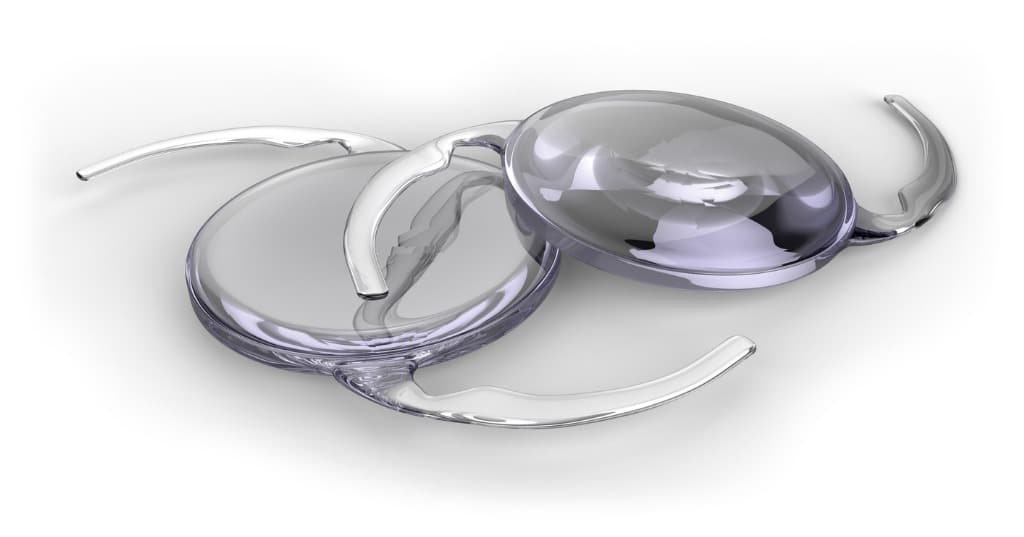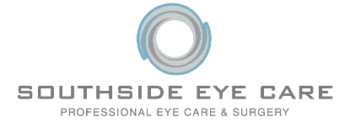
What Are Intraocular Lenses?
When a cataract-clouded lens is removed, it needs to be replaced by an artificial lens. These lenses are called intraocular lenses. They are placed through cataract surgery and permanently replace your clouded natural lens with a crystal-clear artificial lens. Intraocular lenses come in different types as described below. Once implanted in cataract surgery, they remain in place the rest of your life. Unlike your natural lenses, IOLs cannot cloud or degrade in any way.
What Are The Benefits Of Multifocal And Enhanced Dephtophocus IOLs?
Multifocal IOLs and Dephtophocus IOLs are also sometimes called “premium IOLs,” as they cost more than monofocal IOLs. But most patients feel the benefits of these IOLs are more than worth the extra cost.
Premium IOLs allow you to see at all distances without glasses. This means you won’t have to constantly have glasses with you to correct for whichever option you chose not to correct with monofocal IOLs. Premium IOLs also now can correct for astigmatism and presbyopia, actually improving the patient’s refractive vision from what it was before the cataracts were removed.
"Dr. Hallberg is amazing! He takes the time to answer any questions and is very thorough! The whole staff are very friendly and they do not make you wait! Great experience, I highly recommend them!"
What Are The Different Types Of IOLs Offered By Southside Eye Care?

A wide range of replacement lenses are available to cataract patients, each offering different advantages for post-surgery vision. The most effective lens to use depends on the patient's individual preferences and goals for their vision. The lenses eliminate the need for glasses or contacts after cataract surgery, providing most patients with convenient, effective results for their specific vision conditions.
Multifocal IOLs
Multifocal IOLs allow for full vision correction at near, intermediate and far distances, completely eliminating the need for eyeglasses or contact lenses for most patients. Some IOLs can also correct astigmatism. The procedure to implant a multifocal IOL is performed at the conclusion of cataract surgery.
These choices were not always available for cataract patients. In the past, cataract surgery only involved monofocal lenses, which could only focus on objects near or far, but could not adjust to accommodate varying distances. These patients still had to rely on glasses or contact lenses after surgery in order to see clearly at all distances, especially for those older patients suffering from presbyopia.
Dephtophocus IOLs
Crystalens is the only FDA-approved presbyopia correcting intraocular lens (IOL) that corrects vision through accommodation. The Crystalens IOL is made with flexible silicone that has hinges on each side allowing it to move with the eye muscle, flexing and accommodating seamlessly so you can focus on the objects around you at any distance. In other words, it dynamically adjusts to your visual needs.
Accommodation is the ability to shift focus between nearby and distant objects, providing sharper vision at multiple distances in order to minimize the use of glasses. Other IOLs are unable to accommodate and those patients may require additional vision correction with glasses or contact lenses.
Toric IOLs
Intraocular lenses are used during cataract surgery to replace the damaged lens of the eye with an implant that clears up and corrects vision, oftentimes leaving patients with little to no dependence on glasses.
Up until now, patients with astigmatism did not have the same opportunities that other cataract patients have had in correcting their condition with the types of IOL lenses that were available. Typically, the astigmatic patient would need an additional surgical procedure, such as refractive surgery or LASIK, to correct their vision after the procedure. If the patient did not want to undergo another surgical procedure, the only option for correction would be the use of either contact lenses or glasses to address their astigmatism.
Toric IOLs are able to accommodate for the condition of astigmatism. Toric IOLs are specially designed to correct astigmatism along with overall vision during cataract surgery, offering complete vision correction.
"Southside Eye Care has not only provided excellent care for myself,that same level of service has been extended to my Father and SISTER . The standard has been set for others to follow. Thanks"
How Do Intraocular Lenses Work?
Intraocular lenses simply replace your natural lens or lenses. They function just like your natural lenses, helping focus the images entering your eye on the retina at the back of the eye. The retina then sends this information to the brain by way of the optic nerve, and the brain assembles the information into the images you are seeing.
There are different types of IOLs, as technology keeps improving patients’ options. Formerly, patients only had one option, what are known as monofocal IOLs. The patient would select either distance vision or up-close vision and would use eyeglasses to correct for the other distance. Now, patients can also choose multifocal IOLs and accommodating IOLs that allow them to see clearly at all distances. There are different options that we’ll discuss with you during your consultation for cataract surgery.
How Do I Know If Multifocal IOLs Are Right For Me?
As mentioned above, multifocal IOLs allow you to see at all distances without eyeglasses, or with very limited need for eyeglasses, such as with very small type in up-close work. Multifocal IOLs are not covered by the basic Medicare options; they cover monofocal lenses. Most people feel the upgrade is well worth the added cost. Some have better vision with these lenses than they ever enjoyed in their life before they developed cataracts.
This is because these new multifocal and accommodating lenses give them perfect or near perfect vision at all distances, and most people formerly had some degree of refractive errors (nearsightedness, farsightedness, or astigmatism) in their younger days.
Our team at Southside Eye Care will walk you through your options for multifocal and accommodating IOLs. We’ll also discuss monofocal IOLs and why some people opt for them rather than multifocal lenses.
Really the only people who would not be right for multifocal or accommodating IOLs would be those who need precise, perfect vision at distance. Think of pilots or other occupations that require perfect distance vision.
What Are The Disadvantages To Multifocal Or Accommodating IOLs?
These IOL options are really an awesome improvement in vision correction for cataract patients, but they aren’t perfect. There are a couple of issues involved with multifocal and accommodating IOLs that may or may not be an issue for you.
With multifocal IOLs, distance vision and up-close vision are quite good, usually in the 20/20 range. Intermediate vision is acceptable, but some patients need to make adjustments, such as sitting closer to their computer screen. Also, for about one quarter of multifocal IOL patients they notice glare and haloes around lights at night. This can interfere with the person’s ability to drive at night. Most patients, however, find that they get used to this phenomenon with time and the glare and haloes become less obvious. It should be noted that this doesn’t occur only with multifocal IOLs: 7-8 percent of patients with monofocal lenses also have glare and haloes.
Because accommodating IOLs move on the patient’s eyes to change focal length, they can have some disadvantages based on the patient’s individual healing position. The precise position the accommodating IOL ends up in cannot be accurately predicted preoperatively and depends on each individual eye’s healing mechanism. It can vary its final position front to back, affecting either the quality of distance or up-close vision. This occurs in about 20 percent of patients where the accommodating IOL heals into a position slightly away from the average location. In most of these cases, however, LASIK or PRK refractive surgery can be performed to improve the range of unaided vision available. The patient can always wear a mild correcting pair of glasses for certain tasks, as well.
How Long Will It Take To Adjust To Multifocal Or Accommodating IOLs?
There is a period of adjustment as your brain adjusts to the new optical system created with your new multifocal or accommodating lens or lenses. This can take a few days to a few weeks. But most patients are very happy with their end results. In fact, nationwide patients have consistently reported satisfaction rates (would opt to have the same surgery and same lens placed again) of from 94 to 98 percent with multifocal and accommodating IOLs.
What Are The Risks Involved With Multifocal And Accommodating IOLs?
The risks involved with these technologically advanced IOL options are the same as with all cataract surgeries. But these are incredibly low-risk procedures. In fact, cataract surgery is the most successful surgery performed around the world.
Discussed as potential disadvantages above, with multifocal IOLs the patient may not have perfect intermediate vision and about one fourth of patients notice glare and haloes around lights at night. With accommodating IOLs (also discussed above), there is a chance that the lens won’t heal in the absolute correct spot, so there can be some loss of quality in distance or up close vision.
"I have been a patient at Southside Eye Care for over 30 years and have received excellent care. They are very thorough and care about my overall health as it pertains to my eye health."
Are Multifocal And Accommodating IOLs Considered Safe?
These lens options have all been tested and approved for cataract surgery by the FDA and other health organizations around the world. They are safe and effective for restoring clear vision at all distances, usually improving the patient’s quality of vision from their pre-cataract days.
Schedule Your Consultation For IOLs in VA
Southside Eye Care proudly serves Chesapeake, Norfolk, Portsmouth, Suffolk and Virginia Beach Virginia as well as the surrounding areas. For more information on our Premien IOL offerings call us at 757-484-0101 today or fill out our contact form for more information.


